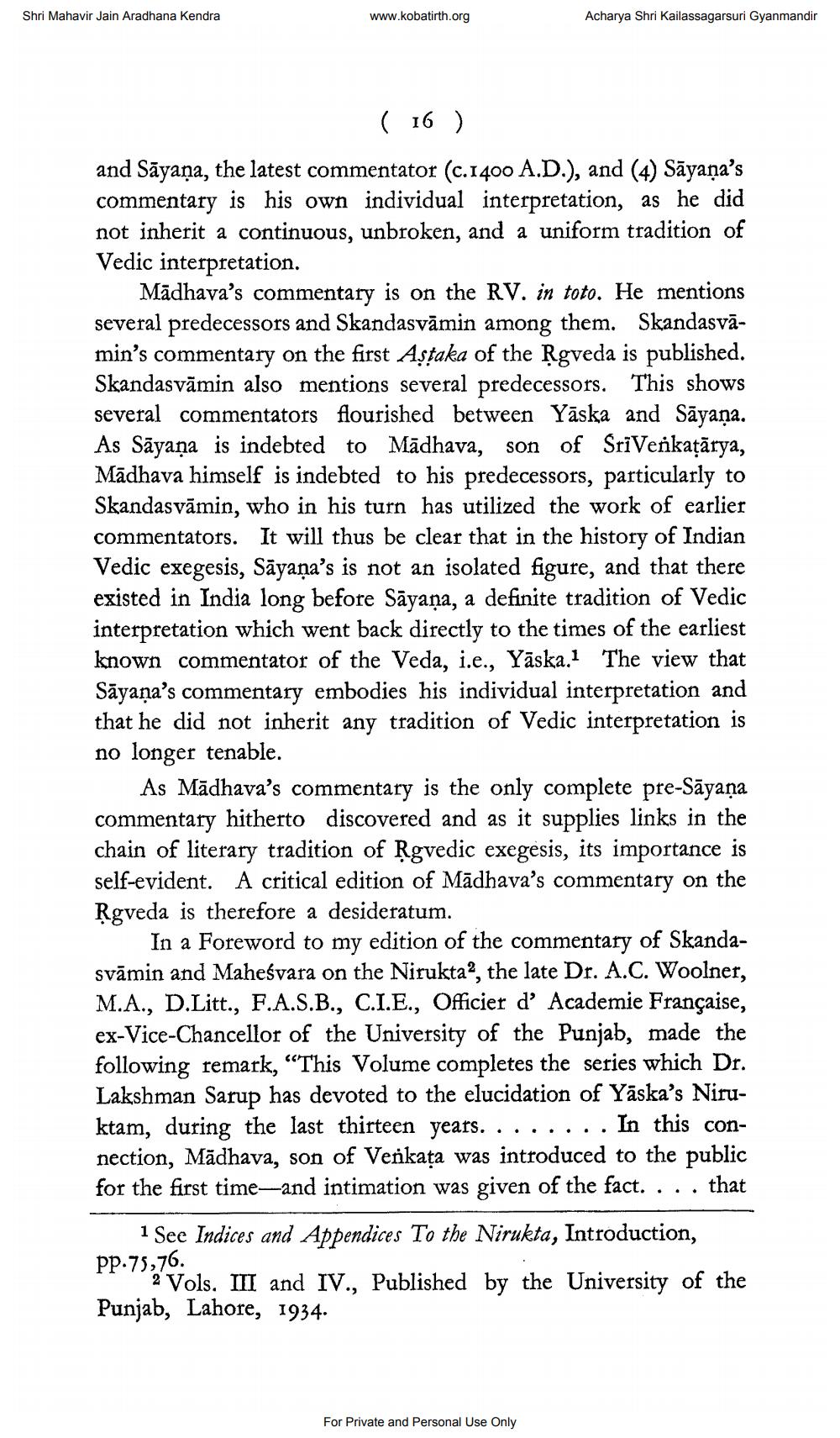________________
Shri Mahavir Jain Aradhana Kendra
www.kobatirth.org
Acharya Shri Kailassagarsuri Gyanmandir
( 16 )
and Sāyaṇa, the latest commentator (c.1400 A.D.), and (4) Sāyana's commentary is his own individual interpretation, as he did not inherit a continuous, unbroken, and a uniform tradition of Vedic interpretation.
Mādhava's commentary is on the RV. in toto. He mentions several predecessors and Skandasvāmin among them. Skandasvāmin's commentary on the first Aştaka of the Rgveda is published. Skandasvāmin also mentions several predecessors. This shows several commentators flourished between Yaska and Sāyana. As Sāyaṇa is indebted to Mādhava, son of SrīVenkațārya, Mādhava himself is indebted to his predecessors, particularly to Skandasvāmin, who in his turn has utilized the work of earlier commentators. It will thus be clear that in the history of Indian Vedic exegesis, Sāyaṇa's is not an isolated figure, and that there existed in India long before Sāyaṇa, a definite tradition of Vedic interpretation which went back directly to the times of the earliest known commentator of the Veda, i.e., Yāska.The view that Sāyana's commentary embodies his individual interpretation and that he did not inherit any tradition of Vedic interpretation is no longer tenable.
As Mādhava's commentary is the only complete pre-Sāyaņa commentary hitherto discovered and as it supplies links in the chain of literary tradition of Rgvedic exegesis, its importance is self-evident. A critical edition of Mādhava's commentary on the Rgveda is therefore a desideratum.
In a Foreword to my edition of the commentary of Skandasvāmin and Maheśvara on the Nirukta, the late Dr. A.C. Woolner, M.A., D.Litt., F.A.S.B., C.I.E., Officier d' Academie Française, ex-Vice-Chancellor of the University of the Punjab, made the following remark, "This Volume completes the series which Dr. Lakshman Sarup has devoted to the elucidation of Yāska’s Niruktam, during the last thirteen years. . . . . . . . In this connection, Mādhava, son of Verkața was introduced to the public for the first time—and intimation was given of the fact. . . . that
1 See Indices and Appendices To the Nirukta, Introduction, PP-75,76.
2 Vols. III and IV., Published by the University of the Punjab, Lahore, 1934.
For Private and Personal Use Only




